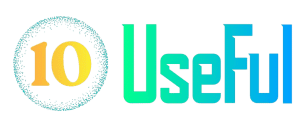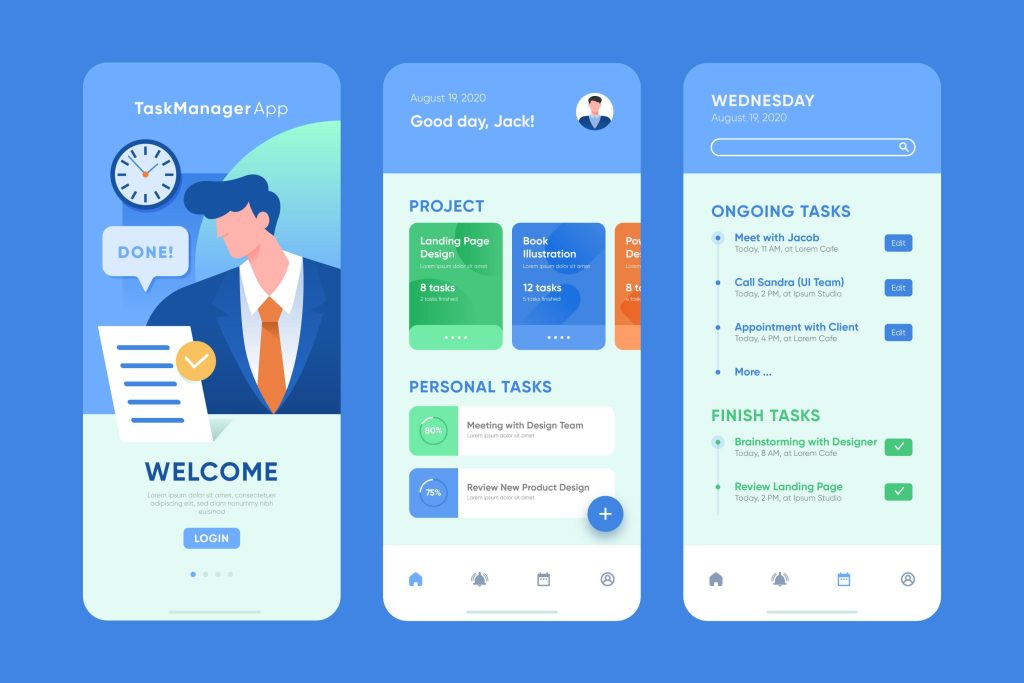1. MICROSOFT TO DO :
Microsoft To-Do is a simple and intelligent to-do list that helps you manage all your tasks in one place. You can work through your tasks for the day in My Day and create any number of additional lists to organize your work, groceries, travel, shopping, and movies to watch – you get the idea! By including a picture, document, or other resource in your job, you may provide further context. All file types are supported by Microsoft To Do, although file uploads are restricted to 25 MB per task. Microsoft To-Do offers complete access to files that were added in Outlook Tasks.
PROS OF MICROSOFT TO DO:
Really practical software! It spent a lot of time testing out various task management programs before deciding that Microsoft To-Do was the best. Microsoft To-Do will be helpful for instructors and students who require a tool that encourages organization, time management, and task management. Reluctant or disorganized students can become more productive and better manage their time if they have the option to schedule reminders, establish due dates, and prioritize daily chores.
CONS OF MICROSOFT TO DO:
If you feel extremely horrible about not finishing anything on your Microsoft to-do list, it may cause tension and keep you up at night. You can feel overburdened and unqualified if you have a long list of duties to complete.
2. TEUXDEUX:
With recurring tasks, you may set up reminders for every day, every week, every month, every year, and more. Keep things until later. Keep separate from your calendar-day duties, your evergreen objectives, projects, and suggestions on a Someday list. Make a mental note by using Daily Digest.TeuxDeux is an excellent task management program that excels in both efficiency and simplicity. Its clear and straightforward user interface provides a clutter-free environment for conducting chores, making it one of the numerous aspects that stand out.
PROS OF TEUXDEUX:
Easily arrange and reorder. To-do lists may be easily moved up and down in priority using TeuxDeux. Easily drag & drop jobs across lists or days.TeuxDeux is also excellent for people. Although less complex than Todoist, it does work like a paper planner or bullet journal.
CONS OF TEUXDEUX:
Not all users may find the pricing to be desirable. Lack of sophisticated facilities for managing complicated tasks. not an Android app.
3)HABITICA:
Habitica, formerly known as HabitRPG, is an online task management tool created by HabitRPG. It organizes work in the style of a role-playing game. Habitica is a project that is open source. Four different Habitica membership plans are available, each costing $4.99 per month, $14.99 every three months, $29.99 every six months, and $47.99 per year, which is a 20% savings! (Prices may change according to location.) You may enhance your daily routines by playing the game Habitica. It “gamifies” your life by rewarding you in-game for activities you complete in real life.
PROS OF HABITICA:
Numerous customers have expressed their feelings of gratitude for Habitica and its capacity to inspire them to complete their activities by making them enjoyable. Users would have to agree that Habitica’s gamification features are what set it apart from other productivity applications.
CONS OF HABITICA:
Although Habitica is intended to be enjoyable and simple to use, not everyone may find that appealing. This may not be the tool for you if you’re seeking more sophisticated habit monitoring with thorough charts and data. The program, though, can be intimidating at first, and using it at all requires an online connection.
4)GOOGLE KEEP:
The free, web-based Google Docs Editors package from Google includes a note-taking tool called Google Keep. Google Docs, Google Sheets, Google Slides, Google Drawings, Google Forms, and Google Sites are additional features offered by the service. Users of Google Keep can create a variety of notes, including texts, lists, photographs, and audio. Reminders may be established by users with choices for time or place that are connected with Google Now. With the use of optical character recognition technology, text from photographs may be retrieved. Google Keep is cost-free.
PROS OF GOOGLE KEEP:
Simple color coordination and organization. Enables the connection of an accompanying image to the note. A reminder alarm is set. Real-time synchronization between devices and with other users makes taking notes easy and practical.
CONS OF GOOGLE KEEP:
The user interface may not initially be intuitive since certain icons are difficult to interpret. Conclusion: A beautiful, adaptable note-taking and organization application with excellent cloud-sharing options.
5)CLICKUP:
A task management tool with excellent dashboard functionality and collaborative tools is called ClickUp. An all-inclusive productivity tool, ClickUp was created for teams of all shapes and sizes in any sector. On a single platform, you can plan, track, and collaborate on any project, establish marketing campaigns, manage development sprints, construct the ideal workflow for you and your team, and do a lot more. A Free Forever Workspace is immediately added to a new ClickUp account. You are free to create an unlimited number of workspaces. To access paying plan features, each Workspace must be manually upgraded from Free Forever.
PROS OF CLICK:
With real-time information that can be arranged into pre-made or individualized reports with charts, maps, calendars, and other elements, ClickUp assists users in monitoring progress. Users may plan and simply share report snapshots with their team after getting everything arranged so they don’t miss a beat.All business sizes may use the great project management platform ClickUp. ClickUp gives teams everything they want for efficient project management with its robust task management capabilities, adaptable workflows, and project management collaboration tools.
CONS OF CLICK:
The higher learning curve of the platform is a frequent gripe among ClickUp users. One of the primary causes of this is that it provides a wide range of functions, some of which may feel overwhelming, especially during the first setup.
6)OMNIFOCUS:
A personal task manager is OmniFocus.The program’s stated objective is to enable users to convert their ideas and thoughts into to-do lists. The application makes use of the productivity system and principles from the book. With the help of OmniFocus, you can transform your ideas and thoughts into projects and to-dos. Things and OmniFocus vary significantly in that Things lacks built-in review capabilities whereas OmniFocus does. Even though Things doesn’t have a built-in review tool, you may still review your projects. However, it does need you to manually keep a record of which projects you’ve examined and when.
PROS OF OMNIFOCUS:
Numerous functions: The software provides a large number of functions that enable users to thoroughly plan and manage chores. Detailed task management: Users may add detailed information to tasks, such as notes, due dates, and tags, to get a complete picture.
CONS OF OmniFocus:
Learning Curve: For new users or those not experienced with Omni’s software, OmniFocus may have a high learning curve. Setting up repeated tasks might be difficult since there are many choices to customize.
7)REMEMBER THE MILK:
Remember It’s simple to recommend The Milk for everyday usage because it’s a well-liked task organizer that’s accessible on practically every device. You no longer have to scribble your to-do lists on sticky notes, whiteboards, odd scraps of paper, or the back of your hand thanks to Remember The Milk. Remember An easy-to-use to-do list program called The Milk makes lists that are well-organized and visually appealing.
PROS OF REMEMBER THE MILK:
Users may construct as many jobs as necessary, and they can use tags to build lists that are both orderly and colorful. Subtasks are supported by Remember the Milk as well. Subtasks divide larger jobs into more manageable chunks. A task may contain as many subtasks as the user chooses, and those subtasks may also have other subtasks. Remember The Milk, like every task-organizing tool, is only as helpful as the user who enters tasks and keeps track of their fulfillment. However, if utilized effectively and often, this software may assist students and teachers in staying on top of everything that requires attention.
CONS OF REMEMBER THE MILK:
No monthly schedule For the premium edition, Remember that Milk only allows yearly subscriptions. The free version has certain restrictions: Although Remember the Milk has a free edition, you could notice that it is missing certain important elements. The mobile app doesn’t seem like a true native application because it is frequently quite sluggish and jerky.
8)BASECAMP:
Basecamp is a good task management tool that places a strong emphasis on effective teamwork and communication. One of the most well-liked tools for task management is Basecamp. With its fully functional project management application, Basecamp offers features geared for businesses. With a variety of extra capabilities including communications, work schedules, documents, and file storage, Basecamp wants to go much further than that.
PROS OF BASECAMP:
With its user-friendly design, customizable templates, and collaboration capabilities, Basecamp is the ideal solution for teams that want a single platform to handle projects. It’s also a fantastic choice for companies that need to keep team members and customers in constant contact.
CONS OF BASECAMP:
The limited customization possibilities in Basecamp might not be suitable for all users. The prices for Basecamp’s plans are more per user and month than those of the majority of its rivals. Additionally, there is a short list of connectors, and several crucial functions that teams may need are lacking.
9. SMARTSHEET:
To use Smartsheet’s sophisticated project management and collaboration capabilities, such as uploading relevant documents, you may now send your form replies straight there. Smartsheet is adaptable and adjustable, but it takes some time to learn how to use it, so only use it if you’re willing to put in the effort. A strong platform like Smartsheet provides outstanding speed to business value. You can enhance communication, automate operations, and make smarter decisions.
PROS OF SMARTSHEET:
Senior managers can easily see the progress of any project thanks to Smartsheet. This puts an end to the irritation experienced when management is unaware of what is happening. Now they won’t have to pester individuals for updates because they’ll constantly be aware of the actual status of things.
CONS OF SMARTSHEET:
Slope of learning. Add-ons are needed for resource management and time tracking Real-time page updates are not available. Due to Smartsheet’s restricted reporting features, some users may find it challenging to examine data and come to wise judgments. Performance Issues: Some users have complained about Smartsheet’s poor loading or response times, especially when working with big volumes of data.
10. JIRA:
For development teams, there is an app called Jira that manages tasks. Jira is an adaptable free task management tool that may be used regardless of your preferred project management methodology. It assists teams in planning projects, monitoring their progress, and prioritizing tasks and next actions. Task management is simple using Jira. Any team, regardless of size, may use Jira to plan, monitor, and report on any business project while maintaining organization.
PROS OF JIRA:
Jira assists you in changing the authorization for a specific job within your team at any point throughout the project, and it assigns a task, customizes the problems and subtasks in a full team, controls the workflow, and tracks progress.
CONS OF JIRA:
The tool is difficult to set up and learn how to use. The user interface’s complexity might make task management challenging. No built-in timeline to monitor the development of your project. No team communication tools for collaboration. For engineering and software development teams, primarily. limited upload of files. Reports cannot be reused.

